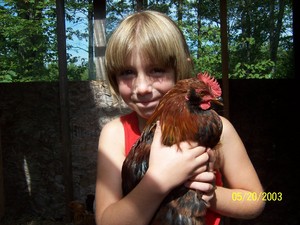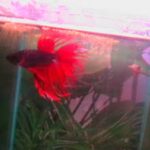If you have freshwater aquarium fish, and are an experienced fish keeper, then maybe it is time to consider attempting to breed your fish. Breeding egg-laying fish is something for the serious and experienced fish owner. It is not easy to breed fish in captivity, but it can be done.
Choosing the Tank Size
First, you need to make sure you have a large tank for the breeding fish. Fish will not breed when they feel crowded in their environment. This is perhaps an instinct due to the fact that fish have hundreds of eggs in their brood. So have at least a twenty-gallon tank to breed your fish. Larger is better. Set it up with a sponge filter if you plan on raising the baby fish in the same take where they hatch. This will keep the fry from being sucked up into the filter.
Setting up Your Tank
Next, you need to set up the tank appropriately for the fish you want to breed. Do some research on different types of fish, as each fish will have different breeding requirements. If you are trying to breed egg scatterers, such as danios and barbs, then set up a tank that has a net or marbles at the bottom. The eggs will fall through this layer when they are laid, and they will be out of reach of hungry parent fish. Once spawning is complete, the eggs and parents must be separated. It will probably be easier to separate the parent. Some egg scatterers lay adhesive eggs, and for these types of fish you need a substrate and fine leafed plants for the eggs to adhere to.
For egg depositors, the tank will be furnished depending on the type of surface the fish prefer to lay their eggs on. For examples, angelfish prefer vertical surfaces to place their eggs on, but some fish prefer cavities, like an overturned pot. Do some research about the type of surface that is best for your fish. If the parents are the type that cares for their young, they can stay in the tank once spawning is complete. If they are not, you can either remove the parents or remove the item they laid the eggs on.
Egg burriers will need a substrate, or soft surface on the bottom of the tank, that they can burry their eggs in. Peat moss is the best substrate, as it can be removed and stored until you are ready to hatch the eggs. Some species’ eggs can be stored for several weeks in this manner.
Mouth brooders will breed right in the community tank if the water conditions are right. They will turn quite aggressive towards other fish in the tank once they breed. So it is often advisable to remove the parents. They will protect their brood, though, so the babies are safe when in the community tank.
Make It Natural
Once you have chosen a pair of breeding fish, then you need to set up the tank to be as close to their natural environment as possible. This includes the water conditions. Research the conditions that occur in their natural habitat. Also, feed the breeding pair high-quality fresh food. This will make your breeding pair as healthy as possible before breeding. Introduce the breeding pair to the tank, and allow them several days to get to know each other. The rest is up to them. Remember, you cannot force fish to breed, so give them time, but do not get frustrated if it does not work the first time. Keep trying, and if you want to switch pairs, go right ahead!





